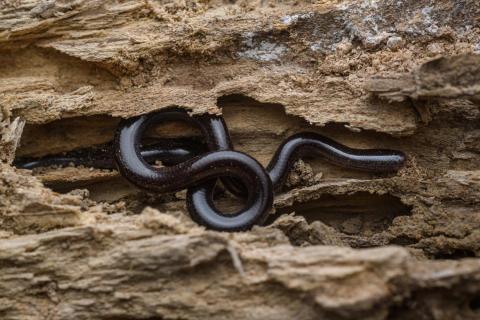First Paper on Scolecophidians (‘blindsnakes’) from Sri Lanka
Sri Lanka has a rich snake diversity, but the island’s scolecophidians (‘blindsnakes’) are poorly understood due to the cryptic, burrowing habits of these inconspicuous animals and lack of systematic field surveys and morphological and molecular analyses. Here a research team report findings from a systematic survey carried out over a decade across the island of Sri Lanka, focusing particularly on the globally widespread, parthenogenetic species Indotyphlop braminus. They report 780 locations across the island in which this species was recorded, at elevations of 1–1,424 m asl, and mostly <1,000 m (771 out of 780 localities). The paper was first published in Systematics and Biodiversity on 10th June 2022.
The paper also provides a molecular-systematics perspective by reporting new DNA sequence data for 15 specimens from Sri Lanka, and new analyses of asiatyphlopine molecular genetic diversity and relationships. Based on molecular results, it is inevitable that (i) Indotyphlops, as originally conceived may not be monophyletic, (ii) phenotypically the I. braminus-like blindsnakes widespread across most of Sri Lanka are a single, genetically homogeneous species, and (iii) some populations from peninsular India are very similar in DNA sequence to I. braminus from Sri Lanka, but others are genetically highly distinct and unlikely to be conspecific. Based on the estimated phylogenetic relationships, researches further recommend that I. braminus is currently best recognized as a phenotypically exceptional species of Indotyphlops rather than, as recently proposed, the only species of a monotypic genus (Virgotyphlops).

